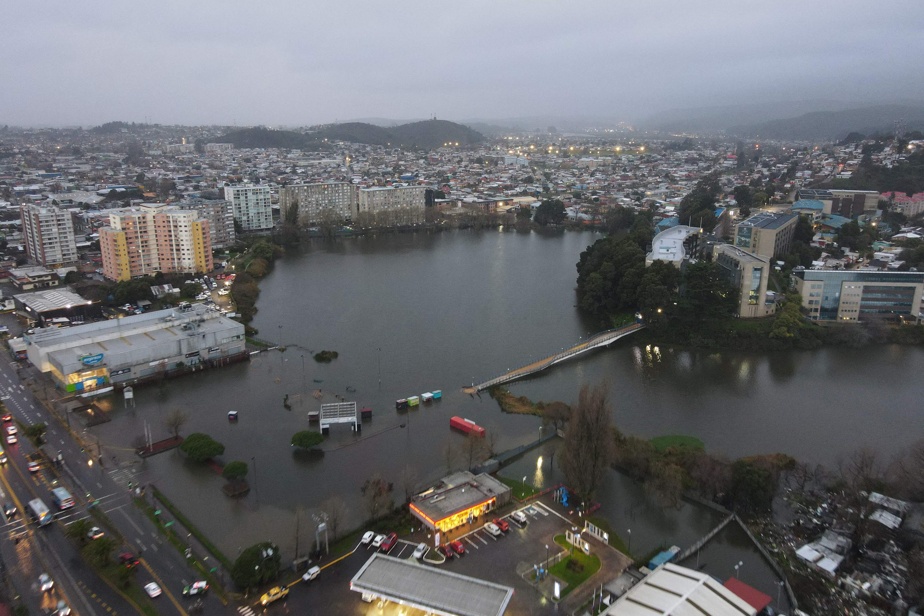(Santiago de Chile) The rain front which has put Chile on alert since Wednesday, leaving one dead and more than 6,000 victims in its wake, according to a final report Thursday evening from the authorities, has left the country and moved to neighboring Argentina.
The intense rains accompanied by violent winds left 6,392 victims, mainly in the Biobio region, in the south of the country, 600 km south of Santiago, according to the latest bulletin from the National Disaster Prevention and Response Service (Senapred) .
Interior Minister Carolina Toha indicated that “the worst of this frontal system is behind us” and therefore weather warnings have been lifted, “but we cannot let our guard down.”
After a little more than 24 hours of rain, “the worst of the frontal system in the regions of Coquimbo, Metropolitana, Valparaiso and O’Higgins has passed,” Interior Undersecretary Manuel Monsalve had earlier announced, adding that “80% of this frontal system has already left Chile and is in Argentine territory.”
The highest level of public warning (climate alarm) was triggered on Wednesday due to unusually strong rains and winds in six of the country’s 16 regions: Valparaiso and Metropolitana, in the center, O’Higgins, Ñuble and Biobio, to the south, and Coquimbo, to the north, which was ultimately virtually unaffected.
Minister Carolina Toha announced the state of “catastrophe” in five of these six regions in order to facilitate emergency aid and visited Curanilahue, in the Biobio region, the city most affected due to the overflowing of two rivers.
Some 2,000 houses were affected by the floods in the area, where the minister visited reception centers for disaster victims.
“We need boats to evacuate people,” a Curanilahue resident assured national television.
In BioBio, 182 mm of rain fell in the last 24 hours, 55 mm in the Santiago metropolitan area, and 67 mm in Valparaiso.
One death was recorded in the town of Linares, in the south of the country, following the “fall of a public lighting pole”.
“Atmospheric River”
The front was accompanied by an “atmospheric river,” a narrow band in the atmosphere that carries huge amounts of moisture suitable for precipitation, said the weather service, which ranked the intensity of the phenomenon between four and five on a scale of five.
In Santiago, there has not been an alert of this level for two decades, according to authorities. The center of the country has been suffering from a serious drought for around fifteen years.
The rain continued to fall in the evening in the capital, where the majority of residents remained cloistered in their homes. Flooding has been reported in some outlying areas and a total of 80mm of rain is expected to fall, as much as for the entire month of June.
Some 14 million people live in the five regions placed in a state of “disaster” out of the 16 in the country of 20 million inhabitants.
The authorities had decreed the total suspension of classes in schools in the capital and the four other affected regions of the country, and asked the population to limit travel.
In the town of Viña del Mar, 110 km from Santiago, the authorities are on alert over the risk of collapse of a 12-story building with 200 apartments, in the Reñaca sector. Rain over the weekend caused a sinkhole 15 meters wide and 30 meters deep under the building.
